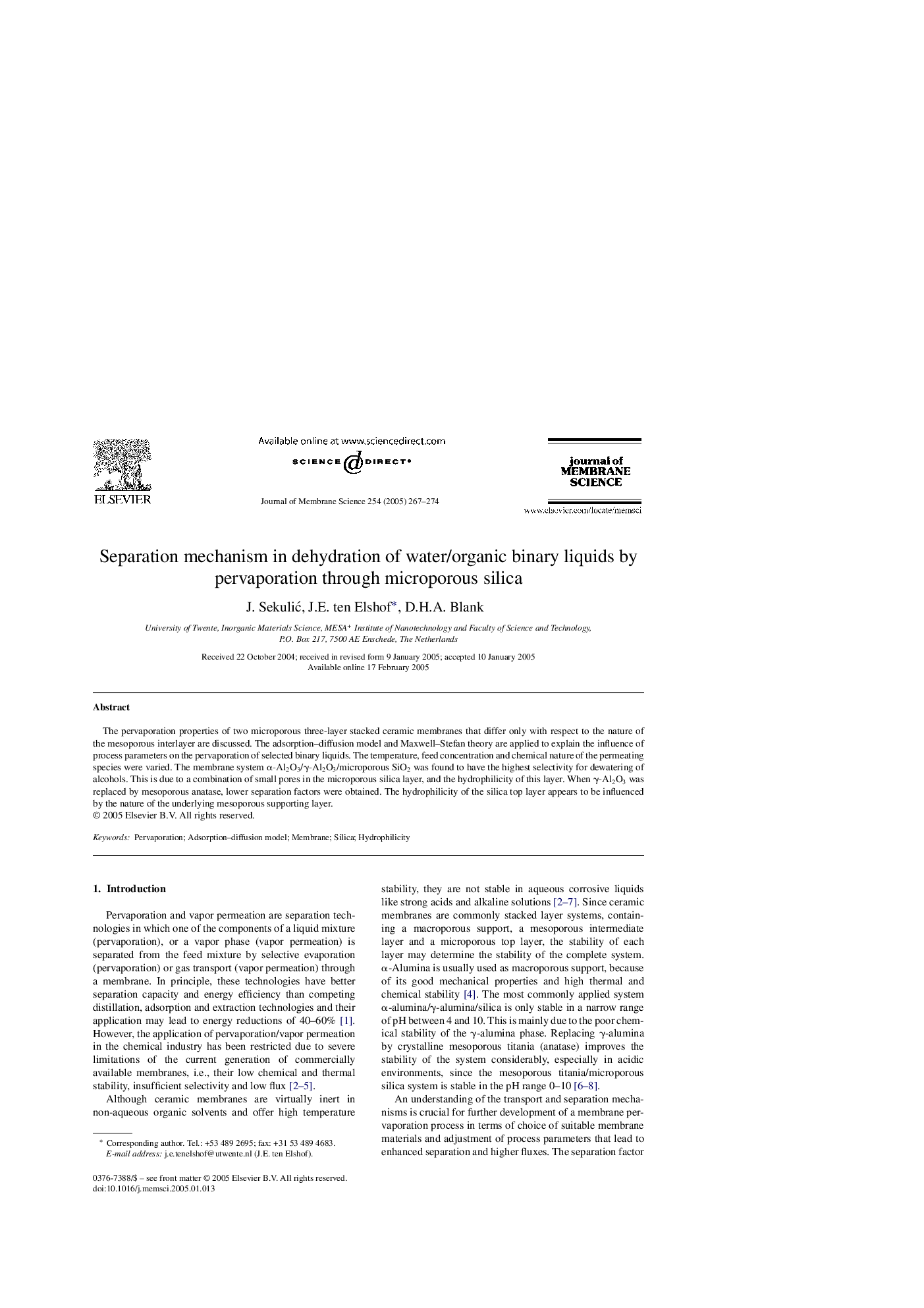| Article ID | Journal | Published Year | Pages | File Type |
|---|---|---|---|---|
| 9684889 | Journal of Membrane Science | 2005 | 8 Pages |
Abstract
The pervaporation properties of two microporous three-layer stacked ceramic membranes that differ only with respect to the nature of the mesoporous interlayer are discussed. The adsorption-diffusion model and Maxwell-Stefan theory are applied to explain the influence of process parameters on the pervaporation of selected binary liquids. The temperature, feed concentration and chemical nature of the permeating species were varied. The membrane system α-Al2O3/γ-Al2O3/microporous SiO2 was found to have the highest selectivity for dewatering of alcohols. This is due to a combination of small pores in the microporous silica layer, and the hydrophilicity of this layer. When γ-Al2O3 was replaced by mesoporous anatase, lower separation factors were obtained. The hydrophilicity of the silica top layer appears to be influenced by the nature of the underlying mesoporous supporting layer.
Related Topics
Physical Sciences and Engineering
Chemical Engineering
Filtration and Separation
Authors
J. SekuliÄ, J.E. ten Elshof, D.H.A. Blank,
